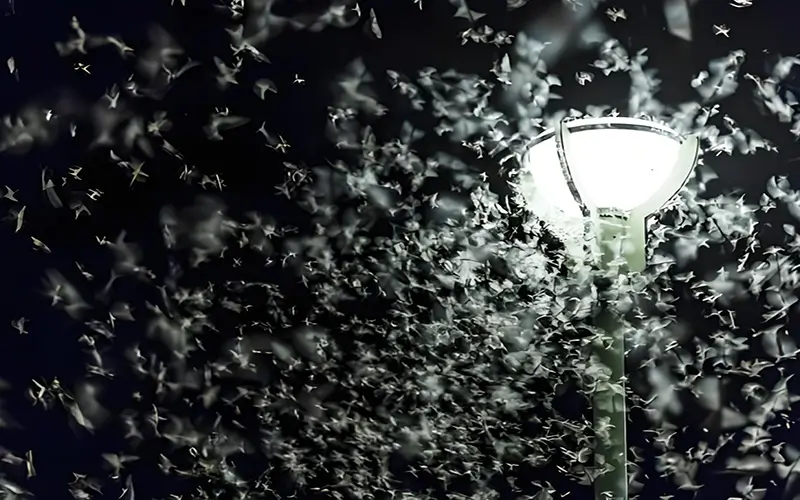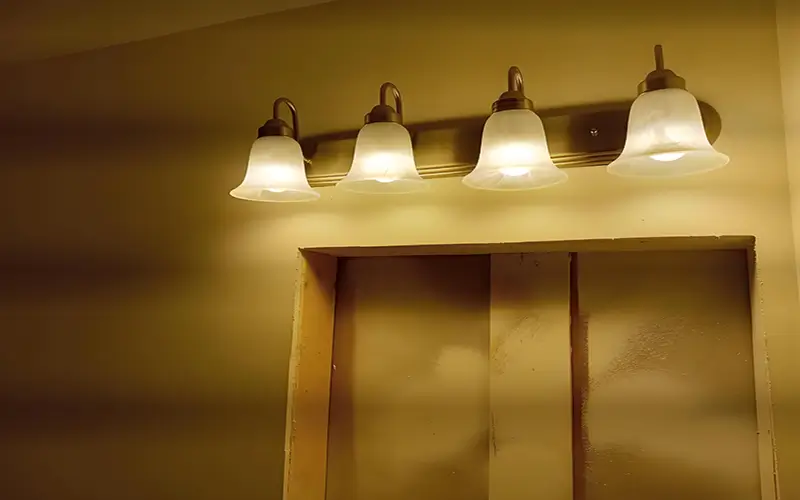
LED lights are becoming more and more common in lighting systems, and are becoming increasingly popular due to their energy efficiency and long life. However, there is a common concern about bugs attracted to LED lights if used at night. In this article, we will explore and answer this question and provide practical tips for reducing bugs around lights. Pls read What Color Light is Best for Your Eyes at Night?
Do LED Lights Attracted Bugs?
LED lights generally attracted fewer bugs than traditional incandescent and fluorescent lights. The main reason is the spectrum of light they emit. Most insects, especially moths and mosquitoes, tend to be attracted to ultraviolet (UV) and certain wavelengths of blue light. Traditional incandescent and some fluorescent lights emit more UV light, and many LED lights are designed to avoid high levels of UV.
Also, LED lights generate less heat, which means they don’t provide a heat source that attracts insects like traditional bulbs do. But overall, LED lights are generally considered a more “safe” lighting option, especially when used outdoors.
Why are Some Lights More Attractive to Bugs?
There are many reasons why bugs are attracted to light, but one big factor is the spectrum. Their sensitivity to UV and blue light. Many insects, including moths, are naturally attracted to these wavelengths of light.
However, it’s important to note that the attractiveness of light to bugs depends on other factors besides just the type of light source.
Other factors include the color and intensity of the light. Light that is brighter or has a lower color temperature (higher on the Kelvin scale) tends to attract more insects. This is because cooler light often contains more blue wavelengths, which are particularly attractive to bugs.
LED Lights vs. Traditional Lights: Which Attracted Bugs More?
LED lights can be designed to emit minimal UV and blue light, plus generate less heat. This minimizes their attractiveness to bugs. Additionally, LED lights are available in a variety of colors, which can be used to further reduce their attractiveness to bugs.
Traditional lights (e.g., incandescent, fluorescent) tend to emit more UV and blue light than LED lights. This makes them more attractive to insects. For example, incandescent lights produce a broad spectrum of light, including a large amount of UV and blue light, which can attract a wide range of insects.
Which LED Lights Tend to Attracted Bugs?
While LED lights are generally less attractive to bugs than traditional light sources, certain colors of LED lights still attract insects. Studies have indeed found that LED lights with cooler colors, such as white, blue, and purple, are more likely to attract bugs. These lights are similar to the natural light sources used by insects to navigate, causing them to flock to them.
In addition, some insects, such as moths, are particularly attracted to light in the ultraviolet spectrum. While most standard LEDs do not emit significant ultraviolet light, special LEDs that produce ultraviolet wavelengths can still attract these insects.
What Colors of LED Lights can Repel Insects?
Some colors of LED lights can repel insects. In particular, studies have found that amber and warm white LED lights are less attractive to insects. This is because these colors emit less UV light and are less intense, making them less attractive to bugs.
Amber LED lights in particular have become a popular choice for outdoor lighting because they are effective in reducing the attractiveness to insects while still providing ample lighting.

Practical Tips to Reduce Pests Around Lights
When you choose LED lights and the right lighting. If you are still worried that outdoor lights may attract pests, you can follow some practical tips to reduce pests. These tips include:
- Try to use warm white or amber LED lights, as these lights are less attractive to pests.
- Install lights in places that are less likely to attract insects, as far away from plants or standing water as possible.
- Use motion-activated lights, which only turn on when needed, reducing the total time they attract insects.
- Keep outdoor areas clean and sanitary to reduce the presence of insects.
Conclusion
LED lights are generally much less attractive to bugs than traditional lighting sources, but there are still some practical tips to reduce the attraction of bugs around outdoor lights. Also, remember to choose the right type of light and take measures to reduce bug activity in outdoor areas. If you need LED strip lights, please contact us.
